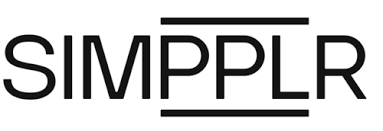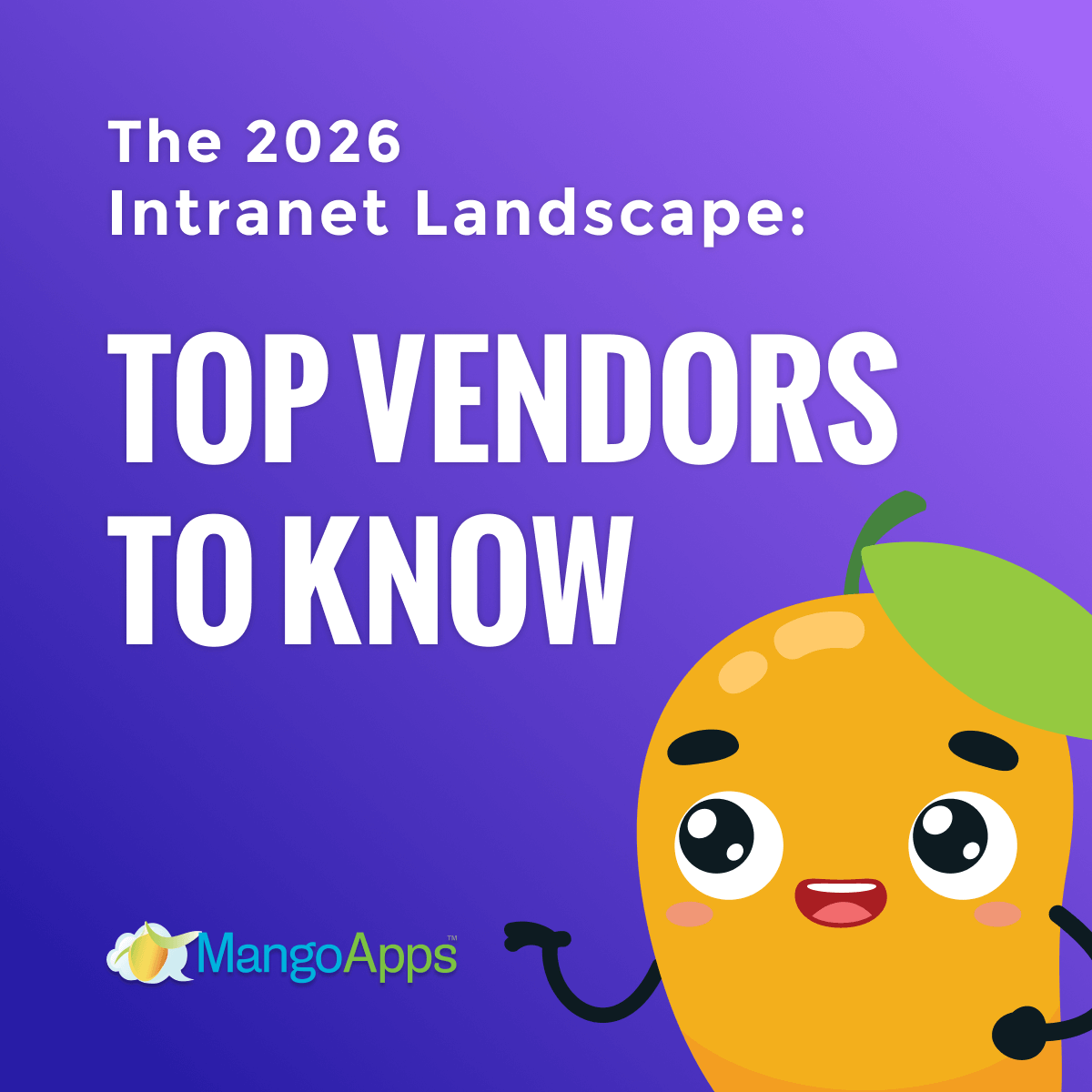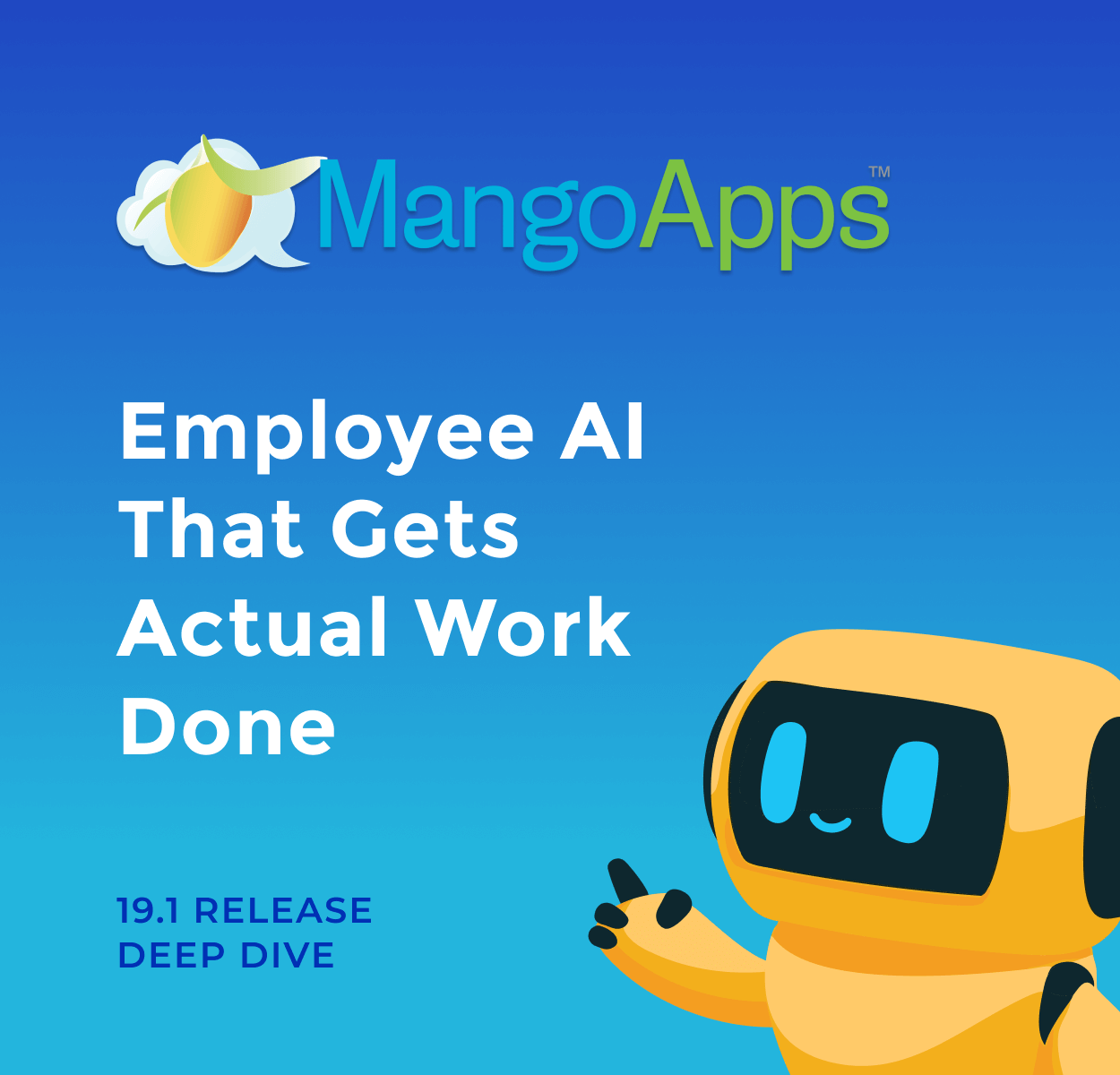
Staffbase has earned a strong reputation as a communications platform, especially among global enterprises in manufacturing, retail, and logistics. But as digital workplaces evolve and frontline workforces grow, many organizations are re-evaluating whether Staffbase still fits their needs. Rising costs, limited flexibility, and complex implementation requirements have left many leaders exploring new, more agile platforms that serve every employee—not just those at a desk.
Below, we break down six of the leading Staffbase alternatives for 2025. Each offers unique strengths for connecting, engaging, and empowering employees, whether they work in an office, a warehouse, or on the frontline.
Staffbase Overview and Common Pain Points
Staffbase remains a recognized leader in employee communications, known for its branded mobile apps and integration with Microsoft 365. It provides a polished experience for top-down messaging and employee newsletters. However, as enterprise needs expand, users have surfaced recurring challenges.
Common Challenges With Staffbase
Limited flexibility: Many users note that while Staffbase offers a clean interface, its customization options are limited. For organizations with unique workflows, complex approval chains, or industry-specific compliance processes, the platform’s rigid templates can make it difficult to tailor experiences or automate role-based content delivery. Advanced branding changes, dynamic page layouts, or specialized integrations often require professional services or additional cost, leaving some companies constrained by the system’s structure.
Learning curve: Many customers report that Staffbase requires extensive administrator training before teams can configure and manage the platform effectively. Because of its layered permissions, multi-site architecture, and reliance on technical configuration for branding and integration, onboarding new administrators can be time-consuming. This steep learning curve can delay deployment timelines, add to consulting expenses, and lead to higher ongoing support costs as organizations depend on specialized staff or vendor assistance for even routine updates.
Feature gaps: Users frequently highlight missing or limited capabilities that affect engagement and feedback processes. These gaps make it harder for organizations to create a continuous feedback loop or foster real-time engagement without investing in third-party modules or custom development. Feature limitations include:
- Basic peer recognition capabilities: Staffbase lacks robust built-in tools for recognizing employee achievements or peer-to-peer appreciation, often requiring external plugins.
- Limited survey functionality: Native survey and polling features are basic and lack advanced analytics, branching logic, or pulse survey automation without add-ons.
- Minimal social engagement features: Community spaces and social feeds are present but less dynamic than other platforms, limiting organic interaction and employee dialogue.
- Restricted workflow automation: Routine workflows—such as approvals, onboarding tasks, or targeted content publishing—require manual setup or custom integrations, adding administrative burden.
Cost and complexity: Staffbase’s enterprise-tier pricing model can be cost-prohibitive for mid-sized organizations or those operating with tighter budgets. Many customers find that they must commit to enterprise licenses or bundled features they don’t necessarily need, leading to higher total cost of ownership over time. In addition, hidden costs such as customization, professional services, and training can quickly increase project budgets.
5 Staffbase Alternatives for Better Employee Engagement
According to SWOOP Analytics’ Sharepoint Intranet Benchmarking Report (2025), the average employee spends fewer than six minutes per day on their company intranet—a reminder that even well-designed communication tools can fall short on engagement if they aren’t personalized or easy to use.
Selecting the right platform requires understanding that each alternative brings unique strengths aligned to different organizational needs. Some solutions emphasize social culture, others prioritize governance or integration, and a few offer unified, AI-powered platforms that combine communication, HR, and operations in one place. The “best” choice depends on factors such as company size, industry, workforce composition, and strategic priorities.
The following five alternatives represent some of the strongest options for improving employee engagement in 2025.
1. MangoApps

The AI-powered employee platform that unifies intranet, communications, HCM, and workforce management in one secure, governed system.
MangoApps is built for enterprises seeking more than a communications tool. It combines every employee interaction—from company news and knowledge sharing to HR tasks and frontline workflows—into one seamless platform. At its core is Mango Employee AI, which powers intelligent search, automated workflows, and personalized experiences for every employee.
Key Differentiators:
- All-in-one platform: Combines intranet, communications, HR, and operations in one interface.
- AI-powered intranet: Answers questions, generates content, and keeps information current in real time.
- Mobile-first for 100% reach: A branded employee app that connects office and frontline workers equally.
- Unified data layer: Provides analytics on engagement, performance, and sentiment, helping leaders act early.
- Enterprise-grade trust: Certified for HITRUST, ISO 27001, SOC 2, and FedRAMP compliance.
Enterprises using AI-first intranets report higher search success, fresher content, and measurable reductions in turnover. MangoApps was named a Leader in the 2025 IDC MarketScape for Employee Experiences and a Visionary in Gartner’s Magic Quadrant for Intranet Packaged Solutions.
Best For: Enterprises seeking one platform that consolidates tools, reduces IT overhead, and creates measurable engagement across all employee groups.
Learn more: Compare MangoApps vs Staffbase
2. Microsoft Viva

Microsoft Viva leverages the broader Microsoft ecosystem—Teams, SharePoint, and Outlook—to create a connected employee experience. Its learning, knowledge, and analytics modules make it a strong choice for companies standardized on Microsoft tools. Ideal for organizations already invested in Microsoft 365.
Strengths:
- Deep integration with Microsoft 365 and Teams, giving employees access to company news and collaboration tools in familiar apps like Outlook and Teams, which reduces context switching and boosts adoption.
- AI-driven insights into wellbeing and engagement that surface burnout risk and productivity trends from real-time Microsoft data.
- Learning and knowledge modules built into daily workflows, offering quick, personalized training and resources inside the tools employees already use.
Best For: Large enterprises committed to the Microsoft ecosystem that want minimal change management.
Limitations:
- High dependency on Microsoft’s tech stack, which can limit flexibility for organizations using mixed ecosystems or non-Microsoft productivity suites. Companies without a full Microsoft 365 deployment may find Viva’s value diminished or face additional licensing and integration costs.
- Limited mobile depth for frontline workers, as the experience relies heavily on Teams and SharePoint access. This can make it less intuitive or engaging for employees in the field who need quick, mobile-first interactions rather than traditional desktop workflows.
See how MangoApps compares to Microsoft tools here.
3. Simpplr

Simpplr focuses on ease of use and brand consistency to provide a modern intranet with strong governance and compliance features. Its clean interface and policy-driven content management make it a good choice for regulated industries or organizations emphasizing editorial control.
Strengths:
- Consumer-grade user experience that makes navigation intuitive and content publishing simple, reducing the need for administrator training.
- Role-based permissions and governance controls that help ensure compliance and content accuracy across departments.
- Sentiment analytics and engagement dashboards that provide actionable insights into employee morale, content performance, and communication reach.
Best For: Enterprises seeking a modern intranet that balances usability and compliance.
Limitations:
- Less robust for frontline communication or mobile-first deployments, which can make it harder for distributed or shift-based teams to stay engaged without access to a desktop environment.
- Limited offline functionality and fewer native mobile integrations mean Simpplr may not scale as smoothly in operations-heavy industries.
- Organizations with highly decentralized workforces may find that employees rely on additional tools for real-time communication or task completion, reducing the overall value of the platform as a single hub.
See how MangoApps compares to Simpplr.
4. LumApps

LumApps is an integration-friendly intranet that bridges Google Workspace and Microsoft 365, providing a unified digital workplace for organizations operating across both ecosystems. It excels at personalizing content, tailoring employee journeys, and adapting to mixed cloud environments where teams use a combination of Google and Microsoft tools.
Strengths:
- Works across Google and Microsoft ecosystems, enabling seamless collaboration and centralized access to documents, chats, and productivity apps across cloud environments.
- Personalization and employee journey orchestration that adapt communications and learning paths to each employee’s role, department, and location.
- Strong search and analytics capabilities, providing detailed insights into engagement, content reach, and platform adoption trends.
Best For: Hybrid-cloud enterprises needing flexible integrations.
Limitations:
- Implementation can be time-consuming, requiring IT expertise to configure integrations, permissions, and branding.
- Admins often need technical knowledge to manage the platform’s customization and data flows effectively.
- Complex deployments and long-term management can raise operational costs, especially for organizations with limited IT bandwidth.
See how MangoApps compares to LumApps here.
5. Workvivo

Workvivo is a social-first employee engagement platform now backed by Zoom. It blends culture, communication, and community into one space, using familiar social interactions to strengthen connection and belonging. Its design mimics consumer social platforms, making it intuitive for employees to share updates, celebrate wins, and recognize peers in a more personal way.
Strengths:
- Social feeds, shout-outs, and celebrations that create an engaging, community-driven experience and encourage participation across all levels of the organization.
- Native video and podcast support that makes storytelling and leadership communication more personal and accessible.
- Tight integration with Zoom, enabling seamless access to live meetings, announcements, and virtual events directly from within the platform.
Best For: Culture-driven organizations that want to build stronger community engagement.
Limitations:
- Shallow analytics and limited workflow capabilities, which make it difficult to measure engagement outcomes or automate key communications processes.
- Narrower feature set focused primarily on communication and recognition rather than broader HR or operations integration.
- Dependence on Zoom’s ecosystem for future innovation and roadmap stability may restrict flexibility for organizations not fully aligned with that environment.
See how MangoApps compares to Workvivo.
6. Blink

Blink is a mobile-first communication and productivity app designed specifically for frontline employees. It focuses on simplicity, speed, and accessibility, providing an easy way for workers to stay informed, view schedules, and access HR tools from any device without relying on desktop systems.
Strengths:
- Optimized for deskless and shift-based workers, providing fast access to schedules, updates, and company news directly on mobile devices.
- Direct access to HR and operational systems via integrations that centralize workflows like time-off requests, shift swaps, and document management.
- Lightweight interface with quick deployment that minimizes setup complexity and ensures rapid adoption across dispersed teams.
Best For: Frontline-heavy organizations that need an accessible, mobile-first platform.
Limitations:
- Narrower feature set focused mainly on communication, with limited support for complex workflows or enterprise-grade analytics.
- Limited customization options make it harder for larger enterprises to tailor the platform for unique branding or compliance needs.
- Reporting capabilities are basic, offering fewer insights into engagement trends or communication effectiveness.
Key Features to Compare When Evaluating Staffbase Competitors
Choosing the right Staffbase alternative means focusing on what truly drives engagement, productivity, and ROI. Below are the top areas to assess when comparing tools, along with why each plays a critical role in shaping employee experience and organizational outcomes.
1. Mobile-First Design:
Eighty percent of the global workforce is deskless, yet only a fraction of organizations design digital tools with them in mind. Look for offline access, branded apps, push notifications, and localized content that support on-the-go communication. Platforms like MangoApps and Blink stand out for extending full functionality to mobile, keeping distributed teams equally informed and connected.
2. Communication Channels:
Multi-channel publishing—including mobile, chat, intranet, and digital signage—ensures important updates reach every audience segment. Strong platforms combine targeting, scheduling, and analytics in one place. MangoApps, for example, enables role-based content targeting, AI-assisted campaign creation, and post-level analytics to measure message impact across teams.
3. Analytics and Measurement:
Beyond basic metrics, leaders should look for sentiment analysis, engagement trend dashboards, and actionable recommendations. MangoApps’ analytics layer provides unified insight into content reach, participation rates, and behavioral engagement, helping teams continuously improve communication strategies.
4. Integration Ecosystem:
Compatibility is key to driving adoption and reducing tool fatigue. Check how well each platform integrates with HRIS, CRM, and productivity suites like Microsoft 365 or Google Workspace. MangoApps supports more than 200 pre-built connectors and APIs, ensuring governance and compliance remain centralized while minimizing redundant workflows.
5. Pricing Flexibility:
While Staffbase follows an enterprise-tier pricing model, alternatives like MangoApps and LumApps offer modular pricing that scales with usage and organizational growth. This allows companies to pay only for what they need, from communications to HR and workflow modules, keeping costs predictable and aligning with long-term ROI goals.
How to Evaluate the Right Fit for Your Organization
When choosing an alternative to Staffbase, focus on practical alignment with your organization’s size, structure, and digital maturity. The goal is to find a solution that fits not just your current needs but also scales with your workforce as it evolves:
- Assess workforce composition: Consider the mix of desk and frontline employees, their digital access levels, and how often they interact with company systems. Platforms built with mobile parity are better suited for organizations with large frontline teams.
- Evaluate integrations: Ensure the platform connects seamlessly to your HR, IT, and collaboration tools to streamline data flow, reduce manual work, and prevent information silos.
- Check adoption targets: According to Social Edge Consulting, healthy intranets achieve 60–70% weekly engagement; best-in-class platforms reach 80% or more. Reviewing case studies and usage analytics can help benchmark what success looks like for your organization.
- Assess scalability and support: Consider vendor responsiveness, implementation timelines, and training requirements to avoid bottlenecks during rollout and post-launch.
- Plan for the future: Arctus research shows that 17% of enterprises already pilot generative AI in their intranet environments—a signal of where the market is heading. Look for platforms investing in AI to automate workflows, personalize experiences, and drive continuous improvement.
Conclusion: Choose a Platform Built for the Whole Workforce
Staffbase remains a strong option for top-down communications, but many organizations now need more than a messaging app. Platforms like MangoApps are redefining what an intranet can do—combining communications, HR, and operations in one AI-powered system that serves every employee.
With MangoApps, companies report faster information access, measurable engagement growth, and significant reductions in turnover. Its AI-powered intranet isn’t just a channel for news; it’s a single, intelligent workspace where employees get answers, complete tasks, and feel connected every day.
Additional Resources:
Frequently Asked Questions About Staffbase Alternatives (FAQ)
1. What are the main reasons companies look for alternatives to Staffbase?
Most organizations begin exploring alternatives because of high licensing costs, rigid customization options, and complex implementation requirements. Others seek deeper integration with HR and productivity systems or a more modern, mobile-first experience that reaches frontline employees.
2. Which Staffbase alternative offers the most complete, all-in-one solution?
MangoApps stands out for combining intranet, communications, HR, and operations into one unified platform. It’s built on a single data layer with AI capabilities that personalize content, automate workflows, and provide real-time analytics for measurable business outcomes.
3. How do pricing models differ between Staffbase and its competitors?
Staffbase uses an enterprise pricing model that can be costly for mid-sized companies. Competitors like MangoApps and LumApps offer modular pricing that allows organizations to pay only for the features they use, scaling easily as needs grow.
4. Are these platforms suitable for frontline or deskless workers?
Yes. Options such as MangoApps and Blink are specifically designed with mobile parity, ensuring deskless employees have full access to communication, HR, and scheduling tools from any device.
5. How long does it take to implement a Staffbase alternative?
Implementation times vary depending on complexity and integration needs. MangoApps, for instance, offers no-code configuration and fast deployment, often going live in a matter of weeks rather than months.
6. How does AI improve the employee experience in these modern intranets?
AI streamlines search, content creation, and workflow automation, helping employees quickly find answers, complete tasks, and stay informed. In platforms like MangoApps, AI Assistants also help personalize feeds, summarize updates, and recommend relevant information.
7. What’s the best way to evaluate which platform fits our organization’s needs?
Start with a clear understanding of workforce composition, integration requirements, and engagement goals. Request demos from two or three shortlisted vendors, review references, and compare long-term ROI using both license and support costs.
8. Can these tools integrate with existing HR or IT systems?
Yes. Most modern platforms—including MangoApps, LumApps, and Viva—offer pre-built connectors or APIs for HRIS, payroll, CRM, and productivity suites such as Microsoft 365 and Google Workspace.
9. What metrics should we track to measure intranet success?
Key metrics include active user rate, content reach, search success rate, time saved on administrative tasks, and employee engagement scores. Advanced analytics tools like those in MangoApps can track these in real time to guide strategy.
10. How do these alternatives support long-term digital workplace growth?
Unlike legacy intranets, modern AI-powered platforms continuously evolve with new automation, analytics, and mobile enhancements. They’re designed to scale as organizations expand, ensuring consistent engagement and collaboration for years to come.










